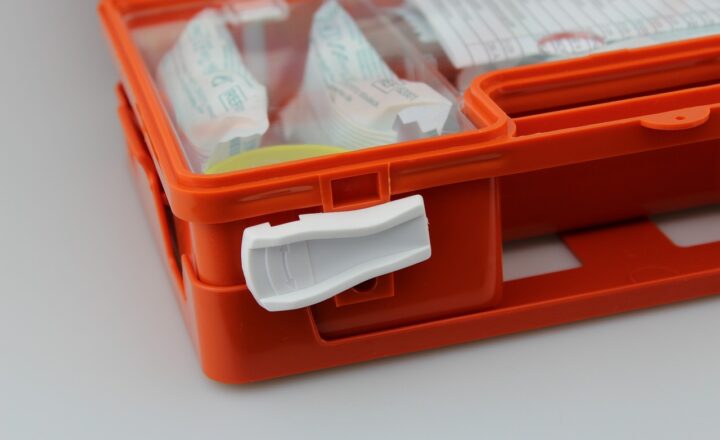The Importance of Ambulance and Hospital Coordination for Quick Treatment
November 13, 2024

In any emergency situation, the promptness and efficiency of the response can mean the difference between life and death. The coordination between ambulances and hospitals is crucial in ensuring that patients receive timely and appropriate care. In this article, we will explore the various aspects of ambulance and hospital coordination, the challenges faced, and the advancements in technology that are improving outcomes for patients.
1. Understanding the Emergency Response System
The emergency response system consists of various components, including emergency dispatch centers, ambulances, and hospitals. Each element must work cohesively to provide effective patient care.
1. Emergency Dispatch Centers: These centers are responsible for answering emergency calls and dispatching ambulances. They play a vital role in determining the appropriate response based on the information provided by the caller.
2. Ambulance Services: Equipped with necessary medical equipment, they are staffed with trained personnel who provide pre-hospital care and transport the patient to the hospital.
3. Hospitals: Upon arrival, hospitals need to be prepared to receive the patient, which requires effective communication from the ambulance team about the patient’s condition.
By understanding these components, we see how critical communication and coordination are.
2. The Role of Communication in Coordination
Communication is the linchpin of effective coordination. Rapid and accurate communication ensures that
hospitals are prepared to receive patients, thereby minimizing the time spent on administrative tasks and prioritizing medical needs.
Factors that hinder effective communication include:
- Information Overload: In times of high pressure, medical personnel can overlook critical patient information leading to mismanagement.
- Lack of Standardized Protocols: Variability in communication protocols between different regions or hospitals can delay treatment times.
- Geographical Barriers: Unfamiliarity with hospital locations can prolong the transport time, especially in urban settings with high traffic.
To combat these issues, regular training and the development of standardized communication protocols are essential.
3. Enhancing Coordination Through Technology
Recent technological advances are also enhancing ambulance and hospital coordination. Some key innovations include:
- Real-Time Data Sharing: Technologies such as electronic health records (EHR) allow various stakeholders access to a patient’s history. Ambulances equipped with mobile data terminals can transmit information in real time, alerting hospitals to the patient’s needs before arrival.
- Geolocation Services: GPS technology helps ambulances navigate quickly through traffic and find the nearest hospital. This reduces transport times significantly, ensuring patients receive care faster.
- Telemedicine: Some services offer remote consultations, allowing hospital staff to prepare adequately for incoming patients. This ensures that the necessary specialists are available, cutting down treatment times upon arrival.
These technological advancements not only streamline the response process but also improve overall patient outcomes.
4. The Impact of Timely Treatment
Research shows that timely treatment significantly affects patient outcomes, particularly in critical conditions such as:
- Heart Attacks: Every minute counts when treating a heart attack; faster treatment can save heart tissue and lives.
- Stroke: Quick response can lead to better recovery outcomes; every minute reduced can lessen the chances of incapacitating effects.
- Trauma Cases: Patients involved in severe accidents require immediate assessment and intervention to prevent further injury or death.
Studies show that a coordinated effort leads to improved survival rates and shorter hospital stays, thereby reducing overall healthcare costs.
5. Challenges in Ambulance and Hospital Coordination
While advancements in technology and communication protocols improve outcomes, several ongoing challenges affect ambulance-hospital coordination:
- Resource Allocation: Limited resources can hamper services, leading to delays and increased pressure on emergency services during peak times.
- Inter-agency Collaboration: Coordination amongst different ambulance services and hospitals requires seamless communication and the establishment of trust, which can be a lengthy process.
- Policy Changes: Fast-changing health policies may lead to discrepancies in protocols, affecting the standardization of practices across different regions.
Addressing these challenges requires cooperation from all stakeholders, including government agencies, healthcare providers, and emergency services.
Conclusion
In conclusion, the coordination between ambulances and hospitals is crucial for delivering quick and effective medical treatment to patients in emergencies. As we navigate the complexities of our evolving healthcare landscape, the integration of advanced technologies, clear communication protocols, and inter-agency collaboration will be instrumental in optimizing emergency response systems. Ultimately, prioritizing coordination will improve patient outcomes and ensure more lives are saved during critical moments.







